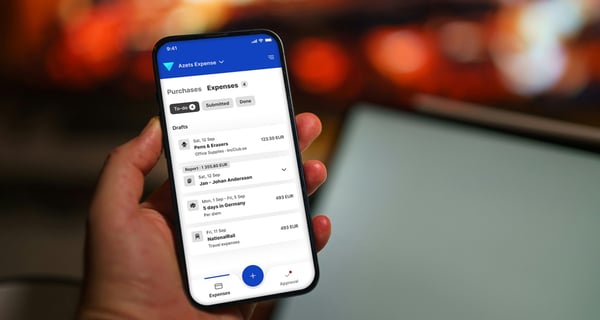

There was a time when the answer to every new product challenge was to build. Add features. Scale the dev team. Keep it all in-house.
But that approach no longer fits the reality of most financial software companies. Roadmaps are full, development resources are stretched, and time to market matters more than ever.
The most forward-thinking product leaders are shifting gears. Instead of defaulting to in-house builds, they are asking a more strategic question: how do we deliver more value without adding complexity?
For many, the better answer is partnership.
Your product team is not infinite
There is always more you could build. But not everything is worth building yourself. It might feel productive in the moment, but it often leads to unnecessary complexity and drains already limited resources. Core features that define your product and differentiate you in the market? Absolutely. But adjacent capabilities, like expense management or mileage tracking, often create more overhead than value when built internally.
Think beyond development time. In-house builds require ongoing maintenance, regulatory compliance, localisation and support. And all of that pulls focus from your core priorities and stretches your team beyond what is sustainable.
The true cost of building everything in-house
Expense management – the classic build trap
One clear example of this dilemma is expense management. It is a feature customers expect, yet it rarely drives differentiation. Still, many financial software companies invest months building it internally, only to end up with a solution that is costly to maintain, hard to localise, and underused by customers.
The functionality may seem simple at first, but once you factor in per diem rates that vary by country, changing tax rules, mileage policies and UX expectations across markets, it becomes a significant resource drain. This is exactly the kind of non-core functionality where partnering with a tech vendor creates strategic leverage.
Every new feature your team builds adds weight. Not just in code, but in responsibility. What begins as a quick internal sprint often turns into an ongoing drain on resources and focus.
- Tech debt piles up
- Support teams get stretched
- Expansion to new markets gets slower
- Key roadmap priorities slip
When speed and focus are critical, that cost becomes too high.
Deliver more by building less
What to ask before you build
Before committing to a new in-house build, especially for features that are not part of your core value proposition, ask yourself:
- Does this feature create strategic differentiation?
- Will we maintain and improve it better than a dedicated partner would?
- Is this the best use of our core team's time and focus?
If the answer to any of these is unclear, it is a signal to pause. Building for the sake of delivery speed, perceived control or internal politics often leads to long-term complexity and wasted resources.
As roadmap planning becomes more constrained, the ability to say no, or to choose a smarter way forward, can be a competitive advantage in itself.
This is why more product and technology leaders are choosing to partner with a tech vendor. Instead of reinventing the wheel, they are embedding proven, market-ready solutions into their platforms. This lets them:
- Offer more value to customers
- Keep development teams focused on core priorities
- Reduce long-term complexity
- Move faster and with less risk
At Findity, we work with product teams across Europe who want to expand their offering without expanding their internal workload. Whether via API or white-label delivery, we help our partners go to market with best-in-class features, under their own brand.
Flexible delivery: Expense API or white-label, your way
A key reason many product teams choose Findity is the flexibility in how we integrate. Some embed our platform via our Expense API to retain full control over the user experience. Others prefer a fully white-labelled solution to accelerate time to market with minimal development work.
Both options allow you to maintain your brand identity and customer relationships, while still benefiting from a proven, scalable expense management infrastructure. You decide what works best for your product roadmap.
A smarter way forward
The pressure to deliver more features is not going away. But adding headcount is not always realistic. That’s where tech partnerships offer a smarter path. You keep control over the user experience and customer relationship, while gaining speed, capacity and compliance.
Your developers stay focused on what matters most, your roadmap gains momentum, and your customers get features they truly value.
What working with Findity actually looks like
We do not just provide the tech and walk away. We build long-term partnerships that support growth beyond the launch. Our team becomes part of yours – a strategic extension of your product organisation.
You get a dedicated setup tailored to your needs, including a partner account manager, product and technical experts, and go-to-market support. We help you navigate new markets, support your marketing efforts under your brand, and stay aligned with your roadmap and business goals over time.
This is what scaling smarter looks like – a partnership built on long-term alignment, shared goals and expert guidance.
Are you curious about how this could look like in your product strategy. Let’s talk about how you can build more, by building less.
You might also like our blog: 4 signs it’s time to sunset a product and refocus for growth.



